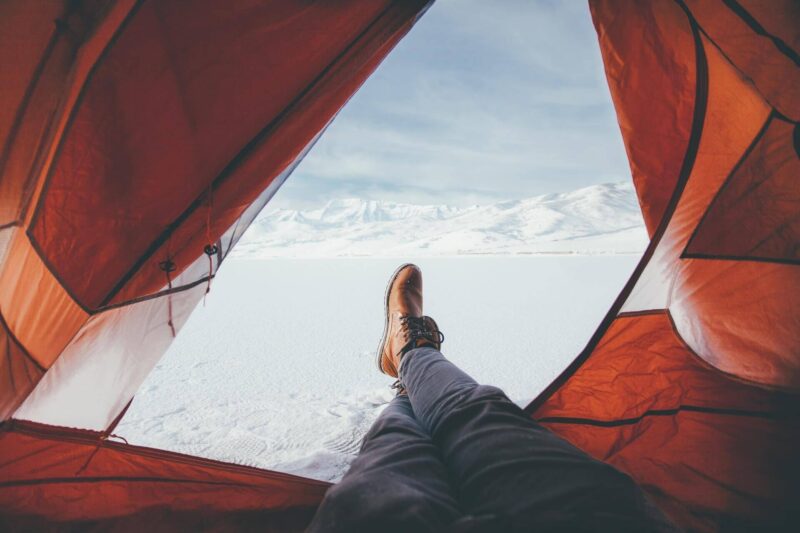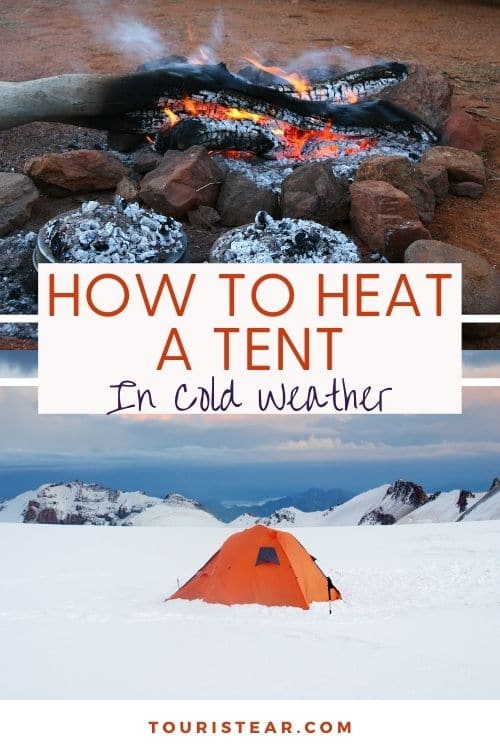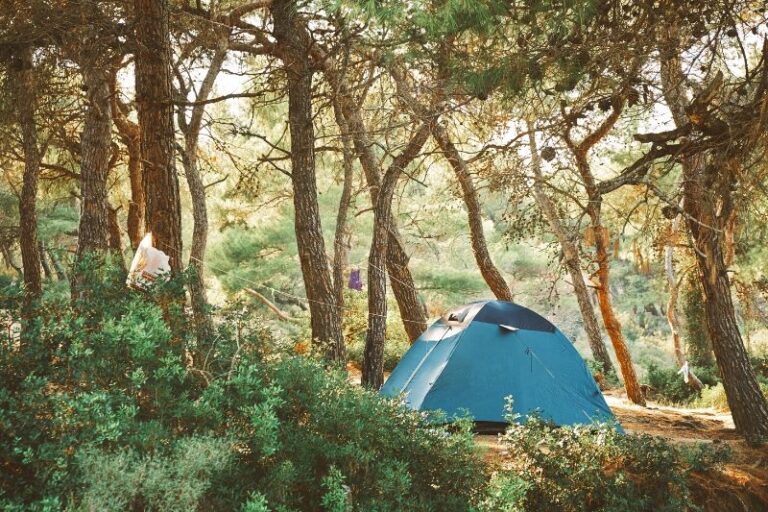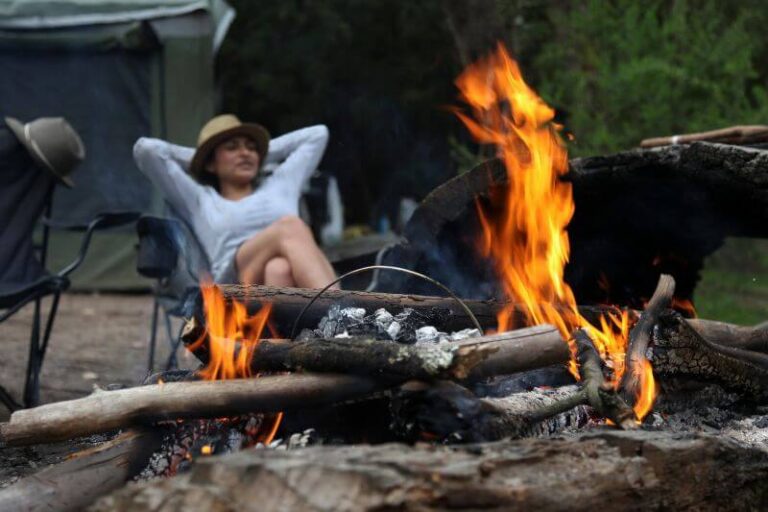How To Heat A Tent In Cold Weather
Camping is one of the most enjoyable and leisurely outdoor activities there is. Whether you’re pitching your tent in an organized campground or a secluded spot in the woods, you can experience plenty of beauty.
There are some challenges to deal with while camping. Bugs buzzing around, carrying your equipment into your campsite, and dealing with cold weather are all situations you’ll have to overcome to enjoy your camping trip.
It’s not hard to heat your tent in cold weather, and there are different methods you can try to keep yourself cozy and warm while camping in a tent in cold weather.
For example, you can try insulating the tent, using the hot rocks method, or bringing along a heater made especially for campers.
Read on to learn more about these techniques and how they can work to heat a tent in cold weather.
Insulating Your Tent
You may be surprised to learn that insulating your tent works wonders for summer and cold weather. Insulation works to keep the conditions outside out and maintain the temperature inside your tent.
You can insulate your tent in various ways to keep it warm in the winter, and one of the best ways is by using a reflective tarp.
A reflective tarp can be wrapped around your tent’s exterior and will trap the warm air inside it while reflecting the cold air away.
You can also put up insulating materials on the inside of your tent to help keep the warm air inside. Again, there’s no need to go out and purchase anything specifically for this, as a blanket or even thick towels could do the trick here.
Cold weather won’t just stop by making the air cold. Instead, it’ll seep into the ground, and that cold air will rise up through the floor and into your tent, which is why it’s important to have some insulation on the ground as well.
You can use a tarp, blankets, thick towels, or even a ground rug to cover the ground where you’ve pitched your tent.

Using Hot Rocks
Warming up rocks in the fire and placing them in your shelter has been a way for people to stay warm in cold weather for centuries. It’s a time-tested method guaranteed to warm up your space quickly and keep it warm for hours.
This method has some dangers involved; you’ll be dealing with very hot rocks sitting near a fire after all!
Make sure to use caution because the last thing you want is to burn yourself and have to end your camping trip early to seek medical treatment.
This is an easy method that requires a few simple steps. Here’s how you can use hot rocks to warm up your tent:
- Gather the rocks. You can’t use rocks to heat your tent unless you actually have some stones! So gather up some medium and large-sized stones from around your campsite. The number of rocks you’ll need will depend on the size of your tent. For a single-person tent, you only need two or three rocks. Double that for a 2-person tent, triple it for a 3-person tent, and so on.
- Build up a fire. Gather your tinder and kindling and get a fire started. Put on some larger sticks, then branches and logs. Once you have a decent-sized fire putting out a lot of heat, you can add some rocks.
- Place the rocks next to your fire. You don’t need to stick the rocks directly into your fire, as that’s obviously unsafe. Instead, place them about 5-10 inches away from your fire, depending on how large it is and how much heat it’s putting out.
- Turn the rocks frequently. Let the rocks absorb heat from the fire and turn them occasionally so that all angles and sides of the rocks have been facing the fire. The idea is to keep turning the rocks to absorb the heat directly into the rocks.
- Test if the rocks are hot enough. This is the riskiest step because you obviously don’t want to burn yourself, but you need to test the stones to see if they’re hot enough to heat your tent. Gently touch the rocks as you turn them, and when they become too hot for you to handle them comfortably, then they’re ready to be pulled away from the fire.
- Remove the rocks. Don’t use your hands to pull the rocks away from the fire; you could risk burning yourself. Instead, use a spare pair of thick socks, a towel, or even a cut-off piece of a tarp.
- Place the rocks in your tent. Now it’s time to place the rocks in your tent. You can pretty much put them where ever you’d like; arranged around your sleeping bag, in the center of your tent, or at each corner of your tent.
- Zip up your tent. The last step is to zip up your tent and enjoy the warmth. The rocks will immediately begin warming up the air and heating up your tent. Simply remove a rock or two from the tent if it becomes too warm.
The rocks will work to keep your tent warm for a few hours, but eventually, the rocks will need to be rewarmed in the fire. This is a great way to heat your tent, and it’s completely safe as long as you use caution when taking the rocks away from the fire.
Use A Heater
Some people enjoy camping in the cold weather but also want to bring along a few luxuries from home life. It can be rugged work warming rocks at night or adding insulation to your tent.
Maybe you just want a relaxing weekend to enjoy camping while fat and don’t want to do a ton of extra work to stay warm.
If this describes your situation, then it would be in your best interest to look into bringing a heater along. Plenty of heaters are designed to be used in a tent, and they’ll keep your tent heated in cold weather without you having to do much work.
There are a couple of different types of heaters available for camping in tents, each with its own pros and cons. Here is a summary of your options so you can pick the best heater for your camping adventure!
Electric Heaters
Electric heaters may not be an option for most campers because they rely on electricity, and if you’re out in the middle of the woods, that won’t help you.
However, an electric heater could be a good option if you’re at a campsite with electric hookups.
This ceramic space heater is approved for use in small spaces and will quickly turn the cold air in your tent warm and comforting. As with most electric heaters, it comes with a cord, so it will only work at a campsite with electrical hookups.
It’s a small heater and weighs only 4.8 lbs, making it a great choice for camping. In addition, it has plenty of features that will allow you to adjust the heat to find the perfect temperature for you.
The downside to electric heaters is the danger of your tent catching fire. Obviously, this is the worst-case scenario possible, but it’s essential to keep that in mind and remain vigilant.
Don’t use the heater in too small of a tent, and don’t use a tent that’s made out of easily flammable material. Keep all materials a ways away from the heater and its cord.
Gas Heaters
There are plenty of butane and propane heaters on the market, and several have been certified as safe to use in a tent. This propane heater by Mr. Heater is one of the best to use to heat a tent in cold weather.
It’s fuel-efficient, safe, and easily portable. This heater will burn 0.044 Gal/Hr at 4000 BTU or 0.099 Gal/Hr at 9000 BTU. It has a max run time of 3 hours and several safety features that will cause it to shut off to prevent trouble.
If you decide to use a gas heater, you’ll need to bring propane or butane in a safe container.
You should also take care when using the heater as it can start a fire if it comes into contact with anything flammable. Keep all flammable materials away from the heater, and never use aerosols inside your tent while the heater is running.
Store the gas away from the heater and outside your tent if possible. Never leave the heater unattended.

Use Candle Lanterns
Most campers are familiar with battery-operated lanterns these days. They’re a great way to light up the inside of your tent and to see around your campsite during the long, dark nights.
However, there’s a significant benefit to using candle lanterns instead, as they can not only provide you with much-needed light but also help to heat your tent in cold weather.
The way this works is pretty simple. When you light a candle lantern, the flame from the candle will emit heat.
The heat from the candle flame will slowly warm the air in your tent and can make the temperature inside quite comfortable, especially if you’ve insulated your tent to help keep the warm air inside.
You can position a few candle lanterns at strategic points inside your tent for maximum warmth. Then, you simply light the candles, close the lanterns, and wait.
This method won’t heat up a large space very well, but it will work to heat a small tent and keep you comfortable.
Final Thoughts
While camping can be a fun and exciting activity, some challenges often need to be dealt with to enjoy your outdoor adventure. Learning how to heat a tent in cold weather will allow you to camp at any time of the year stress-free.
Try insulating your tent using hot rocks, candle lanterns, or even a heater the next time you go camping in chilly weather. It can make all the difference and save you from spending a couple of nights shivering in your sleeping bag!
Plan Your Next Camping Trip
- Everything you need to go Camping
- Healthy Meal for Camping
- Electric Blanket to keep you warm
- Camping Cooking Gear
About the Author
Hussain from Hiker Needs is a passionate hiker and traveler who loves the outdoors and enjoys what nature has to give, whenever he can he loves to write and give tips & honest reviews to help others get outdoors and just seek more unforgettable experiences. You can find him for more on Pinterest as well.

Last Updated on 22 September, 2023 by Veronica
Disclosure: Some of the links on this post are affiliate links, meaning at no additional cost to you, I may earn a small commission if you click through and make a purchase.
Author: Veronica
Vero, a seasoned traveler, has explored 25 countries and lived in five, gaining a rich perspective and fostering an infectious passion for travel. With a heart full of wanderlust, Vero uncovers the world’s hidden gems and shares insights, tips, and planning advice to inspire and assist fellow adventurers. Join Vero and let the shared passion for travel create unforgettable memories.






